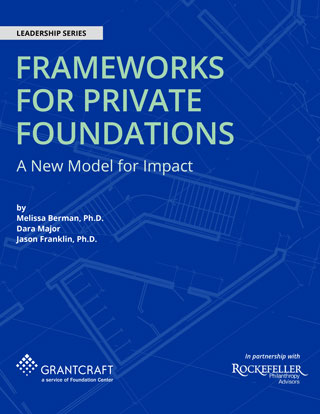Reflections from Hungary on Helping Donors Walk the Talk
I was recently recovering from the results of the general election in Hungary, and desperate to find new ways to advance my work, when I came across How Community Philanthropy Shifts Power: What Donors Can Do To Help Make That Happen by Jenny Hodgson and Anna Pond, a new leadership paper from GrantCraft and the Global Alliance for Community Philanthropy.
Having read a decent amount about how to practice and promote community philanthropy, I was glad to find a publication that aims to support “big donors” (or brave staff of big institutional donors) interested in going beyond paying customary lip service to the topic and delve into it meaningfully.
The paper is a good read for an important audience from an unusual angle. And, most interestingly it made me hungry to do more than just reading – see the details at the end. But first, I attempt to complement the points raised with my own reflections based on the context in which I have worked to promote community philanthropy and foundations. Hungary has been in the news because of its dramatic shrinking space for civil society. Others, like myself, who are interested in the question of what can be done to counter this trend might also find something interesting:
- Metrics: when and by whom should the fruits of community philanthropy be harvested? Back in 2009, with two colleagues we received a grant of €25,000 from a foreign donor to explore whether a community foundation could be established in Hungary. The exploration culminated with the nation’s first community foundation in 2011, which provided an opportunity for those in Ferencváros, a district of Budapest, to support the development of their community. In the first year of operation, the foundation raised less than €5,000 from the community, and was not able to grant anything as it was in the ‘building phase’. By the end of last year, Ferencváros Community Foundation had raised more than €165,000 from the community (and an additional €45,000 from beyond). In 2017 alone, it gave out about €50,000 in grants for community projects that do everything from tackling homelessness and poverty, to organizing a Christmas fair in a high-rise neighborhood, to helping children with long-term hospital treatment to keep up with school work, and the foundation continues to make ambitious plans for 2018. To that initial donor, I would love to say thank you and explain that the initial investment has multiplied and borne fruits for the community – and will do so for many years. I would love to explain that the effect goes far beyond this one community, because the successful example of Ferencváros Community Foundation has led to the creation of more community foundations. Unfortunately, the donor is no longer in the country, but we hope the bold donors who support the ongoing work will stick around to feel good with us.Despite the ‘shrinking space’, new community foundations have now been established in three more cities and it is important that “big donors” supporting this work stay long enough to see the results of their investment. It would be an important positive feedback for them in times when we often experience the opposite!

- Community philanthropy is a good example of the usefulness of foreign funding. Attacks on foreign funding and restricting what and how foreign organizations can intervene are key examples of how space is reduced for civil society. It is important to recognize that such moves are initiated and promoted by members of the political elite and are certainly not supported widely in society. In my personal experience, foreign funders have provided initial money to community philanthropy organizations and community foundations in Central and Eastern Europe. Their ability to think and fund long-term in a flexible way, while building the capacity of intermediaries and CPOs, has been key to the success of community philanthropy, as is rightly noted in the publication. The last 10-15 years have shown how initial investments have been complemented by, and in many cases overtaken by, in-country and local funding, to the benefit of many communities. Why not, then, use community philanthropy as an example that highlights what foreign funding can achieve—and what would have been missed without it? Why not support internationalism with the example of foreign funders working hand-in-hand with CPOs and locals to address issues of concern to the local community? Why give up cooperation with those people and organizations who can turn foreign funding to further important societal issues that governments are unable or unwilling to address?
- Can community philanthropy tackle the shrinking space of civil society? In Hungary, it appears so. A recent study pointed out that Hungarian civil society is facing a future where many already harsh negative conditions will worsen, including funding burdens, government control and discrimination, and marginalization of critical NGOs.The only promising development identified was the growing number of grassroots, community-oriented activities. We all know that at some point these activities and initiatives will need professional support, including funding. Who will support them in a country with very few independent grantmakers, and where wealthy people and big corporations increasingly shy away from supporting the non-profit sector to avoid upsetting the government? What strategy would be feasible for “big donors”, if they wanted to nurture this promising trend now and in the future?
Beyond these observations based on the Hungarian context, reading this paper I was struck by the realization that I would love to have an in-depth conversation with donors who have read this—those who are, indeed, ‘walking the talk’. Our common denominator would be an honest reflection on whether elements of community philanthropy can be deepened in one’s work, and the unique experience and challenges of changing one’s organization from within. Regardless of whether funding follows or not, a conversation built on this foundation would be enlightening, uplifting, and empowering. That’s a powerful starting point for the complex, multifaceted work of community philanthropy and a great way to gain energy to continue to work after the election.




